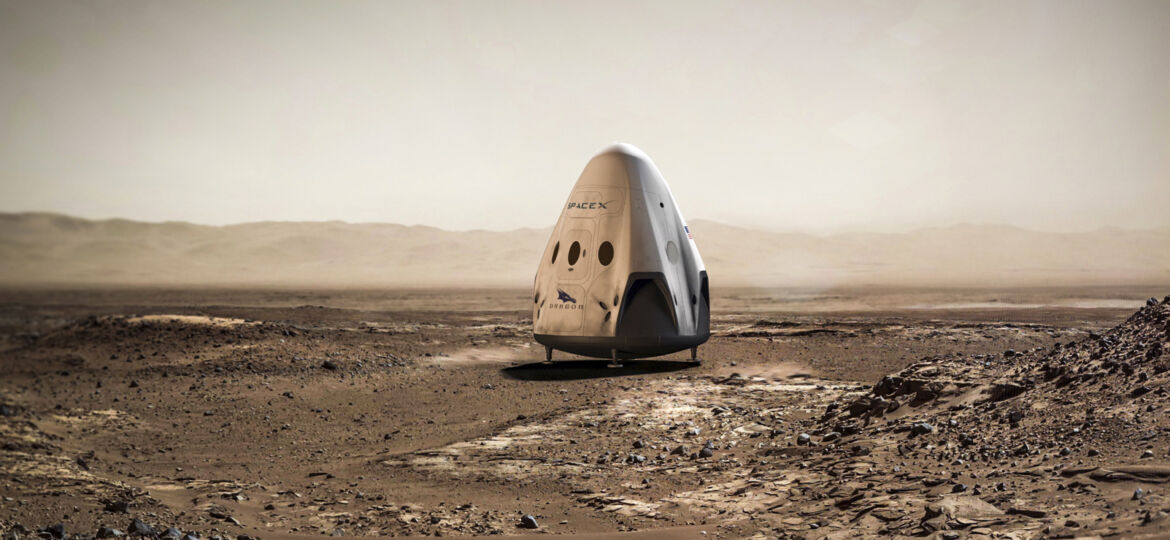
The first inter planetary private company, [inlinetweet prefix=”#SpaceX #Mars” tweeter=”@mgriffin_uk @elonmusk” suffix=””]SpaceX preps for Mars[/inlinetweet]
SpaceX and its outspoken founder Elon Musk have talked about going to Mars ever since the super powerful Falcon Heavy launch vehicle was unveiled a few years back. Now it’s more than just vague talk – SpaceX has announced plans to launch a Mars mission in 2018. This won’t be an orbital rendezvous, either. SpaceX is jumping ahead and wants to land on the surface of Mars with one of its Red Dragon capsules, a modified version of the Dragon v2 it’s developing now.
Planning to send Dragon to Mars as soon as 2018. Red Dragons will inform overall Mars architecture, details to come pic.twitter.com/u4nbVUNCpA
— SpaceX (@SpaceX) April 27, 2016
The Falcon Heavy, which was previously known as the Falcon 9 Heavy was first detailed in 2011 as a heavy lift launch vehicle that could send missions beyond low Earth orbit, which is the target of SpaceX’s Falcon 9 rocket. It consists of three Falcon 9 derived cores in the first stage, each with nine Merlin 1D engines and that thrust will be able to get the second stage on target to just about anywhere in the solar system. The second stage will be fitted with a single Merlin 1D engine modified for vacuum engine all of with which SpaceX estimates the Falcon Heavy could launch a 29,100 pound payload to Mars.
SpaceX’s first Mars mission will be much more modest, and as you might expect, it won’t be manned. The goal will be simply to land a Rad Dragon capsule on the surface of Mars, an important step for future operations. Landing on Mars is challenging when you get past a certain mass. The atmosphere is not dense enough for parachutes to do all the work as they would on Earth. Curiosity got around this with a novel rocket sled design but SpaceX is gaining a lot of expertise of its own in powered vertical landings. Compared with landing a full Falcon 9 first stage on a floating barge, setting the relatively small Dragon capsule down on Mars should be doable.
The Dragon v2 is equipped to carry seven astronauts but it’s really only designed for short term missions. As Musk points out, the internal space is about the same as a large SUV. Certainly not ideal for a multiple month journey to Mars. When the unmanned Red Dragon sets down on Mars it will serve as a scout ship to send data back on the landing and conditions. This will inform future SpaceX landings on the Red Planet and could open the door to landing much larger payloads on Mars and eventually to building human habitats, something Musk has talked about in the past.
As for the actual launch date SpaceX isn’t saying. However, Earth to Mars launch windows are predictable based on the orbits of the planets. The lowest energy trip to Mars in 2018 would need to launch in April or May. That gives Space X almost exactly two years to get things in order. The first Falcon Heavy demo flight is expected to take place later this year.
















